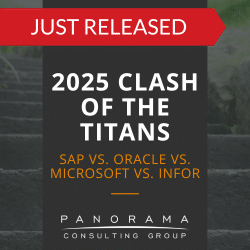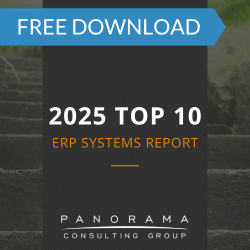There is a belief that a new ERP system by itself will turn around a struggling business or make a thriving business more successful. As exciting as a new ERP system can be, servers, software and hardware are expensive. Organizations need to conduct due diligence to find the correct IT strategy for their needs instead of solely focusing on their budget. An outside set of eyes can be very helpful as they are not blinded by department loyalties or corporate fiefdoms and can see the current environment for what it is. An outside agent also has ample lessons learned from other IT strategies and your company can save money and heartaches by listening to their advice.
Following are four steps for developing a winning IT strategy:
1. Find the right fit: There are a lot of IT solutions out there, and finding the correct one for your business is critical for continued growth. Cost is usually the primary metric that most companies adhere to, but there is much more to consider before pulling out the corporate credit card. Is it appropriate to host your activities in the cloud? Would you rather have your IT infrastructure on-premise? Do your employees need connectivity on the road? How long are you going to live with the IT upgrade? Are you allowing employees to bring their own devices and hook them up to your network? Do you have enough bandwidth? How big and competent is your IT staff? All of these must be considered in addition to cost.
2. Identify the benefits: A baseline of the current business processes is necessary. The IT strategy should start with the overall business strategy and how technology can make your organization efficient, increase production, reduce management costs and improve collaboration. There needs to be a clear roadmap between the current state, the IT strategy and the future state. Timing also needs to be factored into the vision of success. Typical IT upgrades are planned to last for three to five years, but this is highly dependent upon the client and their specific needs. Since IT is a rapidly changing field, the implementation should be started as soon as the IT system is agreed upon.
3. Prepare the employees: An IT strategy cannot be a lightning bolt from the executive suite without consideration for the various departments and end-users. There needs to be a deliberate change management strategy that includes, informs and provides realistic expectations. All departments must be included in the change management strategy and shown how the new IT strategy relates to company goals, how it will make end-users’ jobs easier and how and when they will be trained. Whenever Panorama proposes a new IT strategy, the end-users worry that the new IT program will be paid for by employee cuts and reduced benefits. While some jobs may be made redundant, it is important to have a theory of victory for the employees. Some jobs may be cut, but there will be new work opportunities and jobs will be created because of the new IT capability.
4. Manage the risk: Risk management – particularly with impacts to current business processes and employee expectations – need to be identified and either overcome or mitigated. It is important to have a no-nonsense look at the company and detail how the firm can handle the IT changes. An inventory of the current IT infrastructure as well as a detailed look at its strengths and drawbacks are critical as this creates connectivity within and outside of the company. One of the biggest risks is training, but if the company has created a sound IT strategy, married it to the business processes and set the stage for success with the employees, training should go swimmingly. There will always be friction to change and a sound change management plan will help ease friction and outright resistance to the training and the new IT system.
You don’t have to walk in the tall cotton alone in determining your IT strategy. Find a capable partner to help you navigate the rough patches during an IT strategy and implementation. Panorama can help you by providing critical insights on business processes, change management, risk reduction, and of course, help you determine the best IT infrastructure for your specific needs.
Learn more by downloading our on-demand webinar, Lessons Learned From Best-in-Class Infor Implementations.
Written by Rich Farrell, Senior Manager of Client Services at Panorama Consulting Solutions.












